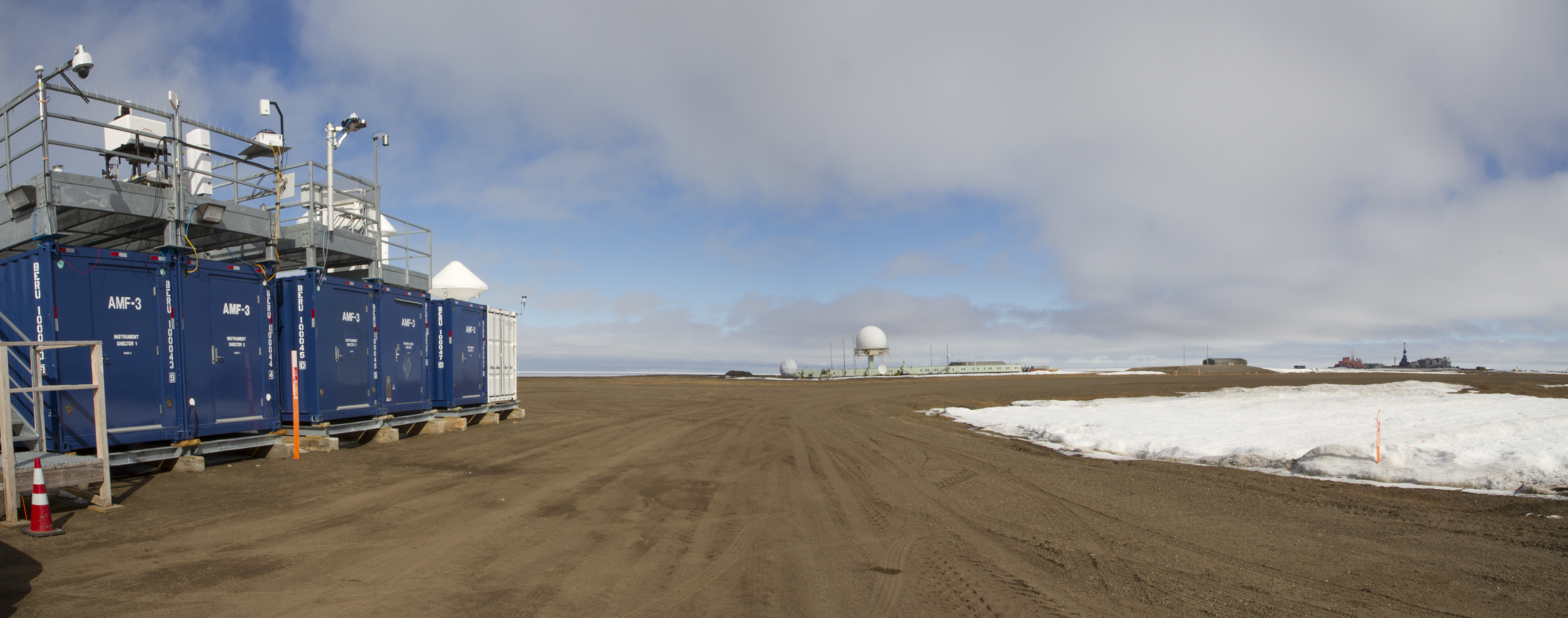Establishing a New Site Science Team for the Third ARM Mobile Facility
Published: 19 August 2019

With the recent announcement to move the third ARM Mobile Facility (AMF3) from Oliktok Point, Alaska, to the Southeastern United States, ARM and the Atmospheric System Research program are joining together to fund a new site science team.
To maximize the scientific return of the AMF3 deployment, the U.S. Department of Energy’s (DOE) Office of Biological and Environmental Research (BER) has invited applications for a DOE national laboratory-led site science team to develop a science plan and initial research project for the AMF3 Southeastern U.S. deployment. The team will provide scientific input and guidance to ARM as they plan for the new deployment.
An AMF3 deployment to the Southeastern United States will provide observations to address critical science questions relating to atmospheric convection, land-atmosphere interactions, and aerosol processes. The new five-year AMF3 deployment will begin in fiscal year 2022.
The successful AMF3 site science team will be expected to work closely with ARM management and with Sandia National Laboratories, which will continue to manage the operations of AMF3. The anticipated start date of the award is January 2020.
The new site science team is expected to:
- formulate a scientific research plan that can be addressed by an AMF3 deployment to the Southeastern United States
- conduct modeling studies, observation system simulation experiments, and/or analysis of existing measurements in the region to inform the AMF3 deployment and science strategy
- identify potential deployment locations for AMF3 in the Southeastern United States that are suitable for addressing the above research questions
- provide scientific guidance to ARM on site selection, site layout, and instrumentation needs for addressing science questions
- develop new algorithms, data sets, software tools, and/or other capabilities needed for AMF3 science goals by using existing ARM observations from other sites
- conduct initial process-based research with the AMF3 observations
- identify and develop collaborations with potential partners in the region
- play a leadership role within the ASR and broader scientific community to catalyze future uses of the AMF3 measurements.
While the current site science team opportunity is limited to teams led by DOE national laboratories, BER anticipates future opportunities for research funding using AMF3 data from the new site that will be open to the broader scientific community.
Keep up with the Atmospheric Observer
Updates on ARM news, events, and opportunities delivered to your inbox
ARM User Profile
ARM welcomes users from all institutions and nations. A free ARM user account is needed to access ARM data.


















